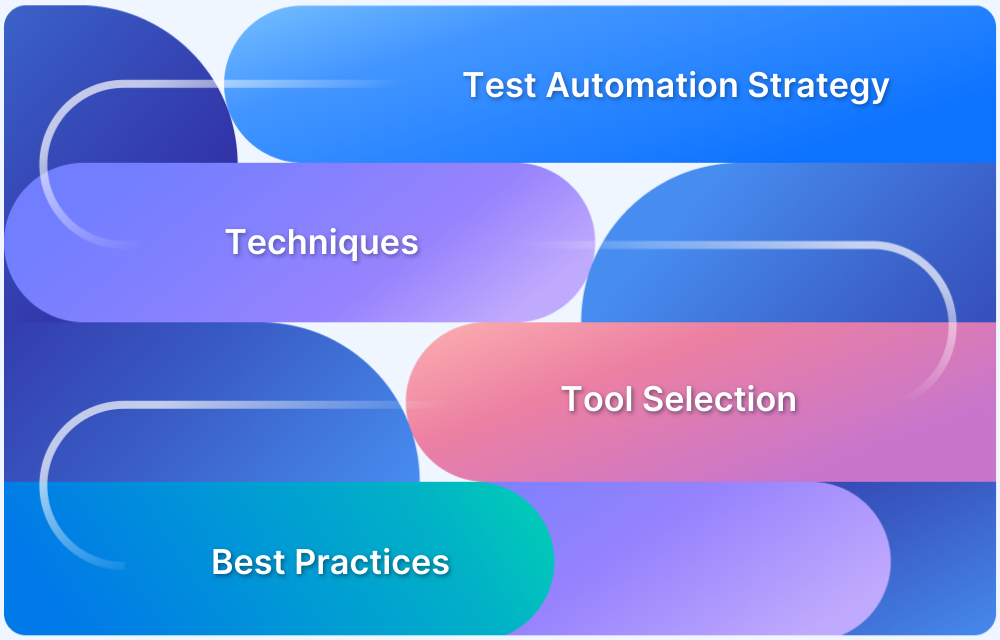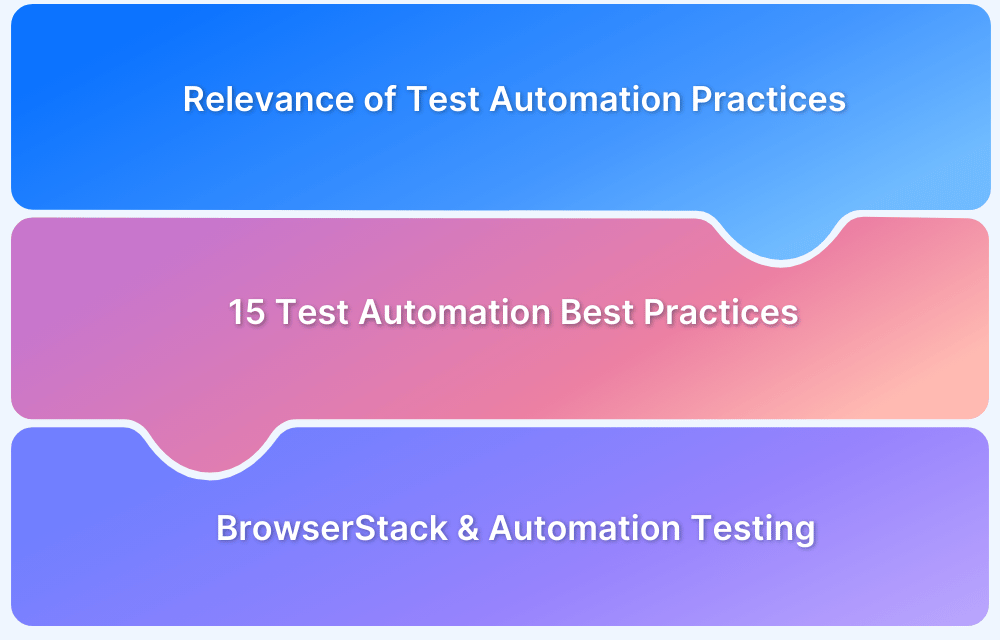Is scaling your test automation proving to be a challenge? You are not alone. While 46% of organizations have automated more than half of their testing efforts, many still struggle to scale automation across their workflows.
Scaling test automation is not just about increasing the number of tests—it’s about transforming your testing process into a robust, sustainable engine that supports faster releases and consistently high-quality software.
This guide explores the key steps to scale automation efficiently, overcome common challenges, and ensure your testing efforts keep pace with the growing demands of modern software development.
The Importance of Scaling Test Automation
According to the World Quality Report, 76% of organizations highlight test automation as critical for achieving faster release cycles. Yet, many fail to reach the desired ROI because they do not plan for scalability.
As projects expand, test debt accumulates, suites become bloated, and bottlenecks appear in regression cycles. Scaling effectively ensures that automation continues to deliver value rather than becoming a liability.
Test automation begins as a productivity enabler for small teams but quickly becomes a necessity for enterprises managing continuous delivery pipelines. When scaled effectively, automation provides:
- Faster feedback cycles: Shortens regression testing timelines from weeks to hours.
- Improved test coverage: Expands validation across browsers, devices, and environments.
- Higher product quality: Detects defects earlier, reducing risk at later stages.
- Resource efficiency: Frees up manual testers for exploratory and high-value testing.
Without scalability, automation frameworks stagnate, leading to bloated test suites, fragile scripts, and limited business impact.
Understanding Key Challenges in Test Automation Scalability
Scaling automation introduces hurdles that can offset its benefits if not addressed. Common QA scalability issues include:
- Infrastructure limitations: Insufficient parallel execution capacity slows feedback.
- Maintenance overhead: Large test suites require constant upkeep to remain reliable.
- Data management: Handling test data at scale becomes error-prone without strategies.
- Cultural barriers: Teams may resist shifting to automation-first workflows.
Recognizing these challenges is the first step toward creating resilient and scalable QA ecosystems.
Strategies to Scale Test Automation
Scaling requires optimizing coverage, maintenance, and execution efficiency.
1. Prioritize Test Coverage Expansion
Scaling is not about writing more tests but covering the right areas.
- Map business-critical workflows and automate them first.
- Expand beyond UI automation to include API, integration, and performance testing.
- Use risk-based testing to identify high-value areas for automation.
2. Resolve Regression Testing Bottlenecks
Regression testing is often the biggest hurdle in scalability.
- Adopt parallel execution to run suites across multiple environments and browsers.
- Implement test impact analysis to execute only impacted scripts after code changes.
- Split suites into smoke, sanity, and full regression packs for efficient execution.
3. Manage Large Test Suite Maintenance
Without active maintenance, suites become unreliable.
- Apply modular test design patterns like Page Object Model and Screenplay Pattern.
- Use version control to track script changes alongside application code.
- Regularly audit test suites to remove redundant or obsolete cases.
4. Prevent Test Debt Accumulation
Test debt grows silently if not addressed.
- Track flaky tests and quarantine them until fixed.
- Eliminate duplicate test coverage.
- Monitor automation metrics such as pass rate, stability, and execution time.
5. Overcome QA Scalability Issues in Complex Systems
When applications scale across microservices, mobile, and web platforms, automation must keep pace.
- Set up realistic, scalable test environments using cloud-based infrastructure.
- Automate test data management to provide consistent and reusable datasets.
- Incorporate service virtualization to simulate unavailable dependencies.
6. Scale Visual Testing for User Interfaces
Visual testing ensures that scaling does not compromise UI quality.
- Use automated visual validation to catch layout shifts, alignment issues, and styling bugs.
- Test across multiple browsers and devices to ensure cross-platform consistency.
- Integrate visual testing into CI/CD pipelines for continuous monitoring.
7. Establish Continuous Improvement Practices
Scaling is not a one-time setup; it’s an ongoing process.
- Set KPIs such as test execution time, defect detection rate, and automation ROI.
- Collect feedback from development and QA teams to improve frameworks.
- Continuously refactor automation code to align with evolving architectures.
Tackling Regression Testing Bottlenecks for Faster Feedback
Regression testing bottlenecks often emerge when growing test suites slow down release pipelines. To address this:
- Parallel execution: Distribute regression tests across multiple nodes or cloud platforms to cut runtime drastically.
- Selective regression: Run only relevant tests based on code changes using test impact analysis.
- CI/CD integration: Automate regression execution within build pipelines for instant feedback.
Reducing regression bottlenecks ensures that teams maintain agility without compromising product stability.
Strategies for Managing Large Test Suite Maintenance
Large test suite maintenance becomes one of the biggest hurdles to scalability. Outdated or redundant tests can cause false failures, eroding trust in automation. Best practices include:
- Regular audits: Periodically review and retire obsolete tests.
- Refactoring frameworks: Modularize scripts to reduce duplication and improve maintainability.
- Stable test data: Implement synthetic or versioned datasets to minimize flaky results.
- Version control integration: Keep test scripts aligned with source code to avoid divergence.
By reducing maintenance overhead, QA leaders can extend automation’s value while preserving reliability.
Preventing Test Debt Accumulation in Scalable Automation
Test debt accumulation occurs when organizations add automation rapidly without addressing sustainability. Similar to technical debt, test debt leads to bloated suites and unreliable outcomes. To prevent this:
- Define coding standards: Enforce consistent practices for writing automation scripts.
- Review processes: Establish peer reviews for new tests before merging into the suite.
- Track test health: Monitor flaky or failing tests and resolve them promptly.
- Limit duplication: Ensure tests validate unique scenarios to avoid unnecessary overlap.
Managing test debt accumulation keeps automation suites lean, reliable, and scalable.
Overcoming QA Scalability Issues in Complex Systems
Complex enterprise systems introduce unique QA scalability issues, such as microservices dependencies, distributed data flows, and integration-heavy workflows. Solutions include:
- Service virtualization: Simulate unavailable or costly components to test in isolation.
- Layered automation: Implement automation across unit, integration, API, and UI levels to reduce reliance on high-cost end-to-end tests.
- Monitoring and observability: Use logs and telemetry to supplement test feedback for better defect detection.
A layered strategy ensures scalability without overwhelming teams with fragile end-to-end tests.
Read More: 16 Best Test Automation Practices to Follow
Scaling Visual Testing for High-Quality User Interfaces
As front-end complexity increases, scaling visual testing becomes critical to ensure consistent user experiences across platforms. Approaches include:
- Automated visual validation: Use AI-driven tools to compare UI snapshots for pixel-level differences.
- Responsive testing: Validate interfaces across multiple screen sizes and resolutions.
- Baseline management: Maintain dynamic baselines to prevent false positives during minor UI changes.
Scaling visual testing allows QA teams to validate not just functionality, but also the aesthetics and usability critical for customer satisfaction.
Best Practices for Continuous Improvement in Test Automation
Sustainable scaling requires continuous refinement of strategies, processes, and tools. Proven best practices include:
- Shift-left testing: Engage automation earlier in the development cycle to catch defects sooner.
- Metrics-driven insights: Track execution time, failure rates, and coverage trends to guide improvements.
- Cross-functional collaboration: Foster collaboration between QA, development, and DevOps for alignment.
- Toolchain integration: Ensure automation integrates seamlessly with CI/CD pipelines, defect trackers, and monitoring tools.
Continuous improvement ensures that automation adapts as systems and business needs evolve.
Why choose BrowserStack to scale Automation Testing?
BrowserStack Automate is a cloud-based test automation platform that enables QA and development teams to run Selenium, Cypress, Playwright, and Puppeteer tests at scale. By providing access to a massive real device and browser cloud, Automate eliminates the need for setting up and maintaining in-house infrastructure.
It allows teams to execute parallel tests, integrate with CI/CD pipelines, and validate applications across thousands of real environments, accelerating release cycles while ensuring quality and reliability.
Key Features of BrowserStack Automate
- Real Device and Browser Coverage: Test across 3500+ real devices and browsers for accurate, real-world results.
- Scalable Infrastructure: No setup or maintenance required—scale test execution instantly on the cloud.
- Parallel Test Execution: Run multiple tests simultaneously to cut regression cycles from hours to minutes.
- Cross-Browser Testing & Cross-Platform Testing: Validate compatibility across Chrome, Safari, Edge, Firefox, iOS, and Android.
- Seamless CI/CD Integration: Works with Jenkins, GitHub Actions, CircleCI, Azure DevOps, and more for continuous testing.
- Debugging Tools: Access logs, screenshots, and video recordings to identify and resolve failures quickly.
- Local Testing Capabilities: Test internal staging or development environments securely behind firewalls.
- Visual and Functional Testing: Combine automated functional checks with UI validation for comprehensive coverage.
- Enterprise-Grade Security: SOC2, GDPR, and ISO compliance with data encryption ensures secure test execution.
If you are facing challenges in scaling your test automation? Our experts can help you address common hurdles, refine your automation strategies, and ensure seamless integration across your testing workflows.
Get Expert QA Guidance Today
Schedule a call with BrowserStack QA specialists to discuss your testing challenges, automation strategies, and tool integrations. Gain actionable insights tailored to your projects and ensure faster, more reliable software delivery.
Conclusion
Scaling test automation is a long-term commitment that extends beyond writing test scripts. It requires strategies to handle regression testing bottlenecks, maintain large test suites, prevent test debt accumulation, and address QA scalability issues in complex environments. Additionally, scaling visual testing ensures quality extends to user experience, not just functionality.
To achieve this at scale, organizations need platforms that deliver reliability, speed, and coverage. BrowserStack offers a robust suite of testing solutions—real device cloud, and scalable automation capabilities—that enable enterprises to manage automation at scale with confidence. With the right strategy and tools, scaling test automation transforms QA into a competitive advantage.






